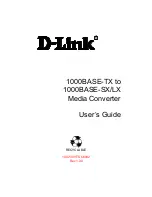
LD200 Manual
Selectronic Australia
4
Batteries and Connections
Batteries are the key to maximum performance from your LD200, if a
battery is too small or not fully charged it may result in de-rated
performance from your LD200.
Battery ratings
Batteries can be rated in one of two ways:
1.
CCA = Cold Cranking Ability. This is the amount of power or current
that a battery can deliver for a short period, typically a few seconds. This
how a car battery would normally be rated.
2.
Ah = Ampere Hours. This is the maximum amount of energy that can be
stored in a battery; this figure will generally be stated at a particular hour
rate. This is how a deep cycle or storage battery would normally be rated.
100Ah @100hr, this means that when this battery is discharged over
a period of 100 hours, the battery has a capacity of 100Ah. This in
theory means 1 Amp for 100 hours, although this would in practice
result in a totally discharged battery that may not then recover.
To achieve maximum performance from your LD200 you must have a
battery capable of delivering 50 Amps for a short period whilst maintaining
at least 10.5 volts. To increase the capacity of your battery you may need to
join more than one battery together.
•
Where batteries are joined
in
series
, add the voltage of
each battery.
The capacity will equal the capacity of the smallest battery. 2 x 12
Volt 100 Ah batteries connected in series would have a total
capacity of 24 Volts – 100 Ah. This would
not
suit your 12 Volt
LD200.
LD200 Manual
Selectronic Australia
9
3.
Once a fortnight or as directed in your battery manufacturer, check the
specific gravity (SG) of each battery cell using a hydrometer, to ensure
that all cells are performing correctly and are properly charged. Any
serious imbalance should be reported to your system designer in case
remedial action needs to be taken.
Radio Frequency Interference
Radio Frequency Interference (RFI) can be a problem for owners of inverters.
RFI in a domestic situation may produce noise or interference on a radio or
TV receiver.
Considerable development time has resulted in a reduction of the RFI
generated by the inverter to a level that complies with C-tick requirements.
Compliance to this standard means RFI is low, but how well the inverter
performs in a particular installation can vary. Below are some suggestions to
help reduce the effects of RFI in your installation;
•
It is recommended that the power system including the inverter be
housed at least 15 metres from the home.
•
Ensure an earth stake is placed as close to the inverter as possible and
connected to the inverter via a short length of wire. See page 2 for
wiring details.
•
Avoid running DC cables into the home, if at all possible. If this
cannot be avoided, run DC and AC in separate conduits separated by
as much distance as practicable. All DC wiring should also be kept
together and be as short as possible.
•
If your inverter is to be installed in a mobile home or similar, try to
keep your inverter at least one metre away from your radio or audio
equipment. The further the better.


























